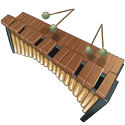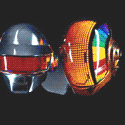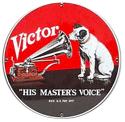|
exquisite tea posted:Would this be a good thread to get some feedback on music notation or is there a better place for it? I've been very slowly getting into home recording, because I've made a whole bunch of songs that I'd really like to record before I get too old, but first I've been very slowly notating everything into sheet music with Noteflight. I figure this way I can export everything to Reaper as MIDI for samples and then maybe recruit actual musicians for the live parts, who would have sheet music instead of my usual brilliant direction of "do something that sounds like this". But I've been out of practice on music theory for literally 20 years so I'd like to ensure my notation is actually readable to musicians before I go on much longer. I can also look it over. Besides being a musician Iím also a professional music engraver (holdover term from when it was done on metal plates; we all use computers now) with experience from classical to modern pop and prog
|
|
|
|

|
| # ? Apr 27, 2024 02:19 |
|
double post 10hrs apart lol my lavalier is super quiet compared to my other sources (AT2035, AT2050, SPD-SX, guitar; all directly into my mixer). Why is that, and what can I do to raise it without just turning the gain up and hearing the noise floor?
|
|
|
|
Jazz Marimba posted:I can also look it over. Besides being a musician I’m also a professional music engraver (holdover term from when it was done on metal plates; we all use computers now) with experience from classical to modern pop and prog weed cat posted:I'd be willing to give it a glance and tell you how readable it is. I went to music school and, at least pre-covid, was a professional musician. honestly though a "make it sound like this" directive isn't bad to have as well, even if it's just a pop song where you're like, "can you make your keyboard sound kinda like this?" and if you're giving music to a guitarist, their sight-reading is even worse than mine!! Thanks, I appreciate it. I am super out of practice, and am probably making a ton of mistakes. But I really have no other excuse, so if it sucks, know that this is literally the best I could do.  I uploaded a PDF of the score and MIDI file here. I don't think it's totally finished yet, but I thought I might as well show what I have. The sheet music is like 25 pages so I'm not expecting anyone to read the entire thing!
|
|
|
|
exquisite tea posted:Thanks, I appreciate it. I am super out of practice, and am probably making a ton of mistakes. But I really have no other excuse, so if it sucks, know that this is literally the best I could do. skimmed it and don't see anything too glaring; I don't know much about tab or drum notation, though. Is the notation for drum kit, or some kind of tuned percussion? I think usually rhythm note heads are either Xs like some of yours, or diamonds or something that isn't a regular round note head. The other thing is some of the grouping/barring. I find 8th+16th+8th barred together a little weird to read, since that doesn't add up to a beat. For the most part you've done a good job not obscuring the "invisible middle bar line" as I've heard it called; no barring/long notes across beat 2 in measures of 4/4. I do see more of it in the drum/tab parts, but again, I'm not sure what people who read that notation expect. There were a couple places I saw two dotted quarters followed by a quarter in the vocal line, but I think that's pretty readable, and works just as well as dotted quarter, 8th tied to a quarter, quarter. Same with a measure starting with an 8th followed by quarter notes that are upbeats... I find that pretty readable even if it crosses the middle of the bar. I also don't know enough about ranges of trumpet/trombone etc to comment on that part. weed cat fucked around with this message at 03:08 on May 25, 2020 |
|
|
|
exquisite tea posted:Thanks, I appreciate it. I am super out of practice, and am probably making a ton of mistakes. But I really have no other excuse, so if it sucks, know that this is literally the best I could do. guitar: -only show the tabs staff in the guitar part, hide it in the score -the rhythms in the tabs should be the same as in the notated part (fake edit: unless they're two parts, one for a reading guitarist and one for a non-reading?) -guitar is written an octave lower than it sounds--transpose the whole part down an octave (fwiw it did this automatically when I imported the MIDI into Sibelius, so I'm guessing the software you're using doesn't account for transpositions) -beaming should show the beat. m10 (and all further instances of that figure) should be written like this to show beat 2:  ---I am not a guitarist, but check with one to see if that phrase is playable; it seems kinda fiddly to play ---voice, trumpet, and trombone m19 also needs to be rewritten to show the beat ---m28 is a figure that is an exception to the showing the beat rule as it is a very simple and very common rhythm ---trumpet/trombone m68-69, 72, 74-75, etc. are not an exception to this rule ---trombone m82 you also need to show the beat with rests voice: -this is the melody. put it on top in the score -lyrics follow prose rules. proper spelling, punctuation, etc. -m48 I think this is what you want instead: a held out syllable with a moving pitch. this is called a melisma, which you indicate with a slur, and underscores for as long as the note is held  -m62 don't hyphenate monosyllabic words. here's the correct notation:  ---also applies to "first" in m90-91 -m80 use one hyphen regardless of note length -m108 yikes. here's what you want:  -m127 to the end, write out the lyrics you want, even if they're non-lexical syllables. right now it's unclear whether you want a new syllable on each note, or the last written "da" to be a melisma across all the written pitches trumpet: -trumpet is a transposing instrument and the players do NOT sight transpose. it's a B♭ instrument, meaning they sound a whole step lower than written. change the key to F# or G♭ for the trumpet part. this isn't an easy key due to all the accidentals though, so consider moving the whole piece up or down a half step (concert F/trumpet G, or concert D/trumpet F). also ask your vocalist what keys work best for them and be okay transposing it to one of those keys -the rhythm in m66 (note on downbeat of one, + of 2, downbeat of 4) is super common, so the correct notation is regularly debated. I'm in the "show the beat" camp cuz there's a solid chance at least one person will gently caress it up if you notate it as you have (dotted eighth, dotted eighth, quarter), and now you have to re-record the whole song (or maybe just part of it) which costs $$$$  -not notation, but the section at m98 could really benefit from a more interesting harmony than octaves. also maybe simplify the rhythms for when the vocalist comes in so they don't clash with those rhythms drums: -when drums are notated in one voice as here, all stems should be upward -when you have sixteenth note triplets (e.g. m2), beam them in one of the following manners:  -bass drum and floor tom both go up a second from where you have them now (into the spaces, not on the lines) -this part isn't idiomatic. you copied the midi data from the guitar part and moved the notes to drum sounds. never do this. it's a cool rhythm, but it means nothing without context. try contextualizing it by putting a basic pop/rock beat in the drums instead (fake edit: maybe the first time could be a 16th note marching snare thing) -not notation, but in m73 you have this cool fill that's totally bringING UP THE ENERGY! and then you go back into the same pattern that's we've spent the last forever (from the listener's perspective) in. either remove the fill or (my preference:) go to a more energetic pattern here. the section before could be a basic pop/rock groove on floor tom, and after the fill could be on open hats -also not notation, but the sextuplets on the hats from m90 onward really clash with everything else going on, and they're also hard to play as written when you add in the snare later lol sorry for the HUGE images p.s. killin song weed cat posted:I think usually rhythm note heads are either Xs like some of yours, or diamonds or something that isn't a regular round note head. Jazz Marimba fucked around with this message at 03:59 on May 25, 2020 |
|
|
|
I'd defer to Jazz Marimba's advice here. I've never been much of a sheet music reader, and the above advice will make the parts super transparent and unambiguous. Then it becomes more about hiring musicians who can read confidently and competently. I've gone into recording sessions with little more than chord changes scrawled on a napkin by the composer, but that's usually a more jazz or jam approach than what you're going for here. My reading is weak enough that even the MIDI file would be a godsend so I could listen along with the sheet music and think, ah yes, that's what's going on here.
|
|
|
|
Wow, that's a lot of helpful advice. Thank you, I'll do my best to clean up the score with the suggestions you've given me.
|
|
|
|
Hoping this is the right thread for this question... I recently picked up a Zoom R16 and knew I was going to have to figure out a solve for cable routing on my desk and get some rack units in place. A goon friend helped me build a nice rack shelf over the weekend to make room for some of my components and I picked up a patch bay to start figuring out my routing. Now that I have this patch bay though I'm realizing there are lots of different ways to set this thing up and I don't know what the best practices I should be aware of are for configuring this. If anyone has some patchbay tips for the devices I have I'd really appreciate it. I've started a spreadsheet w/ all of my device's I/O's listed for beginning to see how they could plug into things: https://docs.google.com/spreadsheets/d/1FRUJJ_0WhZWfb0UTB4h4W9Gh6wy--lhrGoGiIRbio-Q/edit#gid=1294353808 
MMD3 fucked around with this message at 07:17 on May 27, 2020 |
|
|
|
I just wanted to check back in and thank everyone, Jazz Marimba in particular, for so thoroughly reviewing my sheet music. I've made a ton of changes, mostly to the notation but also to individual parts, and finally gotten this song about to where I'd like. I still have to figure out if my software will let me auto-transpose the trumpet part so there's still more work to be done, but I'd prefer to keep working on getting all my other songs down in written form. Writing a few MIDIs probably isn't a big deal to most of you here but for me it's such a slow and painstaking process that I'm happy I've even gotten to this point! Updated Score and MIDI
|
|
|
|
Hi folks! I am hoping to get some help choosing a microphone. Its primary use will be for audio during video calls, but I already own a good audio interface that provides phantom power, so I'm planning on going with an XLR mic and just routing it through that rather than going the USB mic route. I'd also like to get a mic that can pull double duty for recording music vocals. The room I'll be in (for both home-studio stuff and teleconferencing) doesn't have any sound treatment. I'd very much like to be able to record audio without having the mic 6" from my face. If it could go to 2 feet, that'd be perfect, but 1' would be fine, too. If I have to get close for singing type stuff, but far away is fine for teleconferencing that's perfectly acceptable (I don't care how I look when I'm recording, but I'd rather not be eating a mic during meetings). In any case, right now I'm torn between the Rode NTG1 shotgun mic and the NT1-A. I just don't know if a shotgun mic is a good idea. There's also the Shure SM7B. The Shure is a bit more than I'd like to spend, too, so unless it's just obviously the superior choice I'd rather go with something cheaper. I'm also open to anything you might suggest; my initial thought was to get a SM58, but as far as I can tell I'd have to be too close. I don't really have any idea whether I should get a dynamic or condenser mic; condenser seems to me to be better since it records more faithfully, but I honestly have no idea. Durability isn't a big concern, as I never plan on traveling with the mic or taking it on stage or anything like that. If I do that, I'll just get an SM58. Whatever I get will be mounted in a desktop boom arm like this one. Thanks!
|
|
|
|
I did the exact same thing you're trying to do but instead I didn't buy anything and just started using an SM58 for video calls/meetings because I already had one for recording guitars/vocals. My coworkers joked around that I looked like I was a podcaster but aside from the one-off joke, nobody cares. IDK how shotgun mics are for vocals, but I just wanted to mention that nobody cares that you'll look like you're doing standup on video calls and any xlr mic going into an interface will sound leagues better than the built in speaker of your laptop, which is what every one of your coworkers will be using. Get something you're more comfortable will sound good for music and it'll be fine for work. Also just for shits and giggles I connected a cheap no-name xlr mic that came free with a mic stand then did a whole meeting with that and no one could really tell I had a different mic connected on the Teams call. Edit: I'm actually in a meeting right now and swapped out my mic while I was muted. Nobody could tell a difference. I think I may start using this no-name mic more for meetings as it has an on/off switch so I can have a quick mute in case something acts up like how my cat likes to howl when it's my turn to present a progress report. Spanish Manlove fucked around with this message at 20:16 on Jun 4, 2020 |
|
|
|
Thanks, I appreciate that! A big part of it is also that I don't want to obscure the screen or otherwise annoy myself - I mostly keep the camera off anyway tbh
|
|
|
|
Achmed Jones posted:Thanks, I appreciate that! A big part of it is also that I don't want to obscure the screen or otherwise annoy myself - I mostly keep the camera off anyway tbh For video calls you can just get a cheap poofball windscreen that goes on the grille instead of a bigass pop filter so you will look less like a dork. 
|
|
|
|
Looking around, it turned out basically everything was on a really long back order so I ended up going for the Rode NT1 (not NT1A). I found a couple other articles that said shotgun mics were mostly for outdoor work, so regular cardiod seemed better.
|
|
|
|
Achmed Jones posted:Looking around, it turned out basically everything was on a really long back order so I ended up going for the Rode NT1 (not NT1A). I found a couple other articles that said shotgun mics were mostly for outdoor work, so regular cardiod seemed better.
|
|
|
|
exquisite tea posted:I just wanted to check back in and thank everyone, Jazz Marimba in particular, for so thoroughly reviewing my sheet music. I've made a ton of changes, mostly to the notation but also to individual parts, and finally gotten this song about to where I'd like. I still have to figure out if my software will let me auto-transpose the trumpet part so there's still more work to be done, but I'd prefer to keep working on getting all my other songs down in written form. Writing a few MIDIs probably isn't a big deal to most of you here but for me it's such a slow and painstaking process that I'm happy I've even gotten to this point! This is a lot better, but the drum part still needs some work. Drums need to be beamed to show the beat too. A special consideration for percussion instruments is that they're considered non-sustaining and/or you let them decay naturally, and add modifiers if you want the notes shorter or to sound different. So at m11 the groove would look like this:  This shows you where beats 1, 2, 3, and 4 are, and only has the attack of each note visible. A quick and easy rule to use when skimming your parts for cleanup would be to remove any tied notes in percussion parts (even cymbals), and also glance at any dotted notes--they're very rarely used anyway, almost exclusively on the downbeat of 1 or the downbeat of 3 I noticed you only used two toms throughout the entire song, so I also moved the tom from the center line (treble B) to the top space (treble E). When notating for drums, the first two toms are E (rack) and A (floor). From there D (rack) and G (floor) are added, then B (rack or floor). You can add more, but it's pretty rare outside of Rush transcriptions, so I can't remember the order off the top of my head I cleaned up m50, but it's impossible to play as it requires three hands--two cymbals + high tom (and bass drum) simultaneously. This happens throughout the song  mm74-75 you need to "show the invisible bar line", which is a fancy way saying "show beat 3". The only real instance where we don't show it is if it's quarter notes on the + of every beat like in your melody. also, no tied notes, etc.  m127 no tied notes, but a thing with percussion is that you can fill up the note value instead of using rests bad (not beamed to the beat):  better:  best:  also I am not a wind player, but those four measure quadruple whole notes at the beginning/end might be a bit long for people who need to breathe. check with your trumpet/trombone players to make sure edit: jeez, I just canNOT figure out how to get smaller screenshots. I zoomed out for all these, and it said they were smaller, but now they're big again
|
|
|
|
Thanks again for your help. Rhythm notation is a total mystery to me, and unlike all the other instruments in this song I have zero experience even sitting behind a drumkit. As for the other parts, I have rehearsed and performed this piece a few times before with a intermediate-level trombone player. He was able to stick the ending whole notes, even if it did run him a little ragged. I play guitar and vocals and would probably continue to do so in any performance-ready sheet music for this song, so I'm somewhat less concerned with accuracy there.
|
|
|
|
Should I be recording at 96kHz+ (192kHz?) or is 44.1/48kHz good? I recently found out that the multitrack USB chip in my mixer only tops out at 44.1/48 24-bit (Soundcraft Signature 12 MTK), while the cheaper version that comes with 2-channel USB can go all the way up to 192kHz. I generally usually record one thing at a time or the master channels, and I'm wondering if I should go with a different recording solution than my DAW straight from the mixer.
|
|
|
|
It depends really. Partially based on how much you value hd space, however there are some minor noticeable positive differences in quality but your monitoring setup and room will play a huge part in this. If you're at 96khz but on a crappy pair of speakers you won't notice a difference. There's a really old Nail The Mix where Joey Sturgis and Eyal Levi discuss it for ages, and between them they could think of very few producers who do everything at that res. If you're thinking of physical release then I guess your music would be folded back down to 44.1 anyway? Not sure on that one though. Project sample rates can also have some weird effects on sample import. Metapop recently did a Grimes remix comp, all of the stems were at 48, except one that was at 44.1. The way Cubase handled this before I realised and set it to match the project rate was to pitch it up and shorten it. Likewise I normally work at 44.1 cos that's how most of my samples are, and what my friends who sometimes send me stuff use. If I import a sample at a different rate like 48 it'll come in about 1.5 tones flat and too long.
|
|
|
|
Ok Comboomer posted:Should I be recording at 96kHz+ (192kHz?) or is 44.1/48kHz good?
|
|
|
|
44.1/48 and oversampling whenever possible.
|
|
|
|
Not sure if this is the best place to ask, but I am largely doing podcasting/streaming and I have been using a shure dynamic mic, sm57 I think, but I am sick of how close I have to keep it to my face and how poorly it handles quiet and loudness (either everything is too quiet, or I am in clipping hell). So I am thinking of getting a condenser mic, I would like to get one that is xlr (since I am running through a focusrite pre-amp) and not USB. Any good recommendations for a semi-nice condenser mic that can handle recording from a foot or more away from the subject and normalizes louddness decently? Was looking at the AKG P120 or P220 or AT2020 or AT2035 Skyarb fucked around with this message at 11:11 on Jun 10, 2020 |
|
|
|
I got a rode NT1 today. It seems good so far.
|
|
|
|
HELLO THREAD I am back after a several-months-long absence to once again ask questions about track-splitting and this thing called Melodyne. So awhile back, some of yíall may remember I came in here and posted the following... I. M. Gei posted:Crossposting from the Small Questions thread because yíall might be better equipped to answer some of these questions. d0grent posted:just upload your songs to melody.ml or splitter.ai and you can get automatically separated tracks. I ended up trying both of these programs on a few different songs. One of them seemed to work just kinda okay, while the other one (I canít remember exactly which one, as it was several months ago) actually did a pretty alright job of splitting up the parts so I could hear them individually. In fact it worked better than I expected it to. I was impressed. SO, fast-forward to now. Iím finally in the process of buying a much-needed new laptop that Iím gonna install Finale on as soon at it arrives. Iím also planning to run the free 30-day trial of Melodyne on it, but obviously once that trial period starts, the clock is gonna start ticking on how long I can do stuff with it before I have to pay an assload of money to use it again. So in light of that, Iíd like to go ahead and get an idea of what to expect out of it now. Which brings me to my first question. Like I said above, those free track splitters d0grent posted (or at least one of them) did a great job of separating songs into their individual parts...... or rather, they did a great job of separating songs into FOUR OR FIVE parts. Those parts being: ē Drums ē Bass ē Vocals ē Piano and/or Keyboards (only one of the splitters did this part, and I forgot which one it was) ē ďOtherĒ (i.e. Everything that doesnít fit into any of those other categories, like guitars, wind instruments, violins, etc., all crammed together into one single part) Iím wondering if Melodyne ó ANY version of Melodyne ó can split songs into any more parts than just those five listed above. Even if I have to do some kind of advanced-level tedious fancy rear end sound selection/isolation/manipulation poo poo to make it work good. Or if itís just gonna work about the same as the free stuff. Again, Iím not expecting miracles here at all! I know that no track-splitting program or AI therein, no matter how advanced, is ever gonna be able to split up all of the individual instruments/parts in a song perfectly. Iím just wondering if maybe Melodyne can do anything more/better than free stuff like melody.ml or splitter.ai can, and if so, what. Also regardless of whether or not Melodyne can do the splitting thing better, Iím probably still gonna get the 30-day trial, if only so that if I DO actually manage to arrange something decent, and I need a recording of real live people playing it with real live instruments, I can take separate recordings of indivdual people playing each instrument/part separately, and then combine them all together in Melodyne to make a whole song (since the covid plague makes that about the only way Iíd be able to make full song recordings at the moment). Melodyne can do that sort of thing too, right? I. M. Gei fucked around with this message at 08:50 on Jun 11, 2020 |
|
|
|
Skyarb posted:Not sure if this is the best place to ask, but I am largely doing podcasting/streaming and I have been using a shure dynamic mic, sm57 I think, but I am sick of how close I have to keep it to my face and how poorly it handles quiet and loudness (either everything is too quiet, or I am in clipping hell). So I am thinking of getting a condenser mic, I would like to get one that is xlr (since I am running through a focusrite pre-amp) and not USB. Any good recommendations for a semi-nice condenser mic that can handle recording from a foot or more away from the subject and normalizes louddness decently? Have you tried using compression to even out the levels?
|
|
|
|
Jazz Marimba posted:a bunch of yoooooo can you maybe hook me up with some of this music theory/writing know-how? I donít mean actually look at or correct anything I write (Iíd prefer goons not see any of that until after itís finished and I know for sure whether or not it sounds good). Iím wondering if you have any, like, good books or online resources or Youtube videos on how to ďcorrectlyĒ write music. Especially percussion parts, as I know less than jack poo poo about percussion music... Iíve only ever written music for trumpet, and even that was just short little video game tunes and some school band music I copied into Finale to hear what it sounded like. Iíve been a horn player for more than half my life and I still donít know what the various keys and scales are called.
|
|
|
|
I. M. Gei posted:yoooooo can you maybe hook me up with some of this music theory/writing know-how? I donít know any concise guides that are what I would consider ďgoodĒ, let alone something Iíd recommend to numerous people on a public forum, but Behind Bars (~65 USD) is the the engraving bible, but at 700 pages itís heftier than a Bible bible. also the small section on percussion and drums is pretty awful (bad info, self-contradictory, etc). Honestly I only know one person in the field whoís read it cover to cover, and he works full time at an engraving/publishing company; the rest of us just look stuff up as we need This incredibly brief ďbookĒ (~10 USD) by Norman Weinberg is about drum set specifically and is a good place to start, but I have a list of caveats for it since itís 22yo at this point. Itís based off his 900 page doctoral thesis, which is available somewhere on his website, but itís 2 almost 3am and I canít be bothered to find the exact link Also for drums, also by Norman, this 26yo article is free and definitely a place to start, but again: whole list of caveats While a lot if it wonít be directly applicable (itís a lotta classical, jazz, and theatre), this facebook group is a great resource (with the occasional heated debates and inexplicable references to trains, whiskey, and heraldry). The search function is invaluable
|
|
|
|
I. M. Gei posted:Iím wondering if Melodyne ó ANY version of Melodyne ó can split songs into any more parts than just those five listed above. Even if I have to do some kind of advanced-level tedious fancy rear end sound selection/isolation/manipulation poo poo to make it work good. Or if itís just gonna work about the same as the free stuff. Melodyne can definitely isolate separate melodic instruments but you'd have to figure out which notes to delete to get the full isolated melody of your target instrument. It won't sound great but it is possible. Your best bet would be to use one of those automatic tools and then take the "Other" track and throw that one into melodyne to further isolate the notes. d0grent fucked around with this message at 22:05 on Jun 16, 2020 |
|
|
|
Notating my own music for the first time has made me realize how much I hate my own vocal phrasing. It's fun to sing but it's a nightmare to write! Stupid tuplets and dotted eighth notes everywhere.
|
|
|
|
After watching some tutorial videos in which it's deployed heavily, I'm trying my hand at using OTT compression on some twisty neuro bass stuff to really bring out its character (and to make it very very way more stronger). I'm trying to apply it to sounds coming out of my hardware synths but I'm getting A LOT of noise when I do this. This does not happen when I apply the compressor to a software instrument. With my speakers turned all the way up I can barely hear any noise, and there certainly isn't any showing up in my DAW or Scarlett MixControl meters. What is going on here? Is my interface (Scarlett 18i20 with the OctoPre expansion) causing the problem, is it at the end of its life?
|
|
|
|
Does the noise occur with the OTTs on but without playing anything on the synth?
|
|
|
|
Skyarb posted:Not sure if this is the best place to ask, but I am largely doing podcasting/streaming and I have been using a shure dynamic mic, sm57 I think, but I am sick of how close I have to keep it to my face and how poorly it handles quiet and loudness (either everything is too quiet, or I am in clipping hell). So I am thinking of getting a condenser mic, I would like to get one that is xlr (since I am running through a focusrite pre-amp) and not USB. Any good recommendations for a semi-nice condenser mic that can handle recording from a foot or more away from the subject and normalizes louddness decently? You'd do well with the 2020.
|
|
|
|
d0grent posted:Does the noise occur with the OTTs on but without playing anything on the synth? Yep.
|
|
|
|
I need some better software to make recordings of and produce speak. Audacity is terrible. I mean, it "works", but actually managing peaks, mean/average volume, reasonably keeping silence silent, managing multiple takes of the same segment, and keeping the sound consistent across multiple recordings that may be weeks or months apart, is not really doable with it. My specific use case is recording speech for phone IVR systems, where sometimes a part may need to be reworked, or new parts added to something that was made months prior. Can anyone recommend an application that's good for doing this kind of work, and ideally doesn't have too many irrelevant features? Commercial software is fine, but I may not be able to justify more than $100. nielsm fucked around with this message at 13:55 on Jul 15, 2020 |
|
|
|
|
nielsm posted:I need some better software to make recordings of and produce speak. Audacity is terrible. I mean, it "works", but actually managing peaks, mean/average volume, reasonably keeping silence silent, managing multiple takes of the same segment, and keeping the sound consistent across multiple recordings that may be weeks or months apart, is not really doable with it. Any daw will work. Reaper is a freeware daw that does pretty much everything. It's also freeware like winrar where it just gives you a popup when first opening it. It will look super intimidating will all the buttons and options and routing and poo poo but once you get the hang of any daw it becomes second nature. Spanish Manlove fucked around with this message at 14:19 on Jul 15, 2020 |
|
|
|
Spanish Manlove posted:Any daw will work. Reaper is a freeware daw that does pretty much everything. It's also freeware like winrar where it just gives you a popup when first opening it. Yeah, seconding this, Reaper is exactly what you'd need, and then some.
|
|
|
|
nielsm posted:I need some better software to make recordings of and produce speak. Audacity is terrible. I mean, it "works", but actually managing peaks, mean/average volume, reasonably keeping silence silent, managing multiple takes of the same segment, and keeping the sound consistent across multiple recordings that may be weeks or months apart, is not really doable with it. If you are on a PC, or on a Mac and canít stretch your budget, Reaper (as mentioned) If you are on a Mac and can stretch the budget, Logic Pro is $200 and has about $4,000 of plugins built in.
|
|
|
|
Thanks, I'll try out Reaper. Probably can't get away with using it unlicensed for work purposes (management is strict about proper licensing) but a trial is probably fine. What I'm most worried about using a DAW is that it locks me into working as if I was making music, forcing a tempo, bars, etc. onto me when that makes no sense. I remember using Apple's Garage Band for similar things around 10-12 years ago and that being a major problem. But Garage Band was always massively limited regardless so probably not a good benchmark.
|
|
|
|
|
I'm pretty sure you can just turn off quantization and set Reaper to display timecode on the timeline instead of beats/bars etc, most DAWS these days let you do this, I will use timecode in Cubase sometimes, like if someone says "that tom at 2:39 is too loud"
|
|
|
|

|
| # ? Apr 27, 2024 02:19 |
|
nielsm posted:Thanks, I'll try out Reaper. Probably can't get away with using it unlicensed for work purposes (management is strict about proper licensing) but a trial is probably fine. You can press alt+g ang it turns the grid off/on or just go to options->snapping and the setting is on there
|
|
|



































